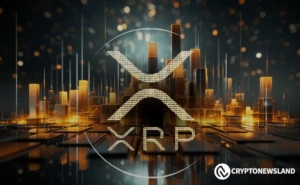Solana's $300 Target Amid Volatility and Emerging BlockDAG Competition: A Contrarian Play on High-Growth Crypto Assets
- Solana (SOL) faces a critical juncture in 2025 amid volatility, with a $195.99 price and 24.80% annual gain despite regulatory risks and BlockDAG's 15,000 TPS challenge. - Institutional adoption ($1.72B invested by 13 firms) and upcoming Firedancer upgrades aim to boost scalability, while a potential 2025 ETF approval could drive SOL toward a $300 target. - BlockDAG's $385M presale and 2,900% early returns highlight disruption risks, but Solana's 4,500+ developers and 65,000 TPS edge maintain its DeFi/NF
The cryptocurrency market in 2025 is a theater of extremes—volatility, institutional bets, and technological innovation collide to create opportunities for contrarian investors. Solana (SOL), once a darling of the DeFi and NFT ecosystems, now faces a critical juncture. Despite its recent price of $195.99 and a 24.80% annual gain, skepticism abounds. Critics point to regulatory risks, whale outflows, and the rise of BlockDAG, a DAG-based project claiming 15,000 TPS. Yet, for those willing to look beyond short-term noise, Solana's $300 target by 2026 remains a compelling case.
Solana's Resilience: A Foundation Built on Institutional Adoption and Technical Momentum
Solana's price trajectory in Q3 2025 reflects a blend of resilience and volatility. After a 4.68% one-day drop to $187.19 on August 26, the token rebounded to $195.99 by August 27, showcasing its ability to recover amid broader market swings. This resilience is underpinned by institutional adoption: 13 publicly traded companies have injected $1.72 billion into Solana reserves, holding 8.277 million SOL (1.44% of total supply). Sharps Technology Inc. and Upexi Inc. alone control $445.4 million and $416.3 million in holdings, respectively.
The Firedancer upgrade, set for early 2025, is a key catalyst. By optimizing Solana's consensus layer, the upgrade aims to reduce slot times and enhance throughput, addressing scalability concerns. Meanwhile, the potential approval of a Solana ETF by the SEC in October 2025 could unlock a new wave of institutional capital. Analysts project a 59% upside to $300, assuming these factors align.
BlockDAG's Rise: A Disruptor or a Distraction?
Emerging projects like BlockDAG are challenging Solana's dominance. With a hybrid DAG + PoW architecture, BlockDAG claims 15,000 TPS—triple Solana's 50,000 TPS but with a stronger emphasis on decentralized security.
However, BlockDAG's success is still theoretical. While its EVM compatibility and partnerships with sports teams like Inter Milan add real-world utility, it lacks the institutional infrastructure and developer ecosystem of Solana. Solana's 4,500+ developers and 300+ dApps, including DeFi protocols and NFT platforms, create a moat that BlockDAG has yet to breach.
Contrarian Logic: Buying the Dip in a Shifting Landscape
The contrarian case for Solana hinges on three pillars:
1. Short-Term Weakness as a Buying Opportunity: Solana's 31% discount to its all-time high of $294.85 offers a margin of safety. Institutional investors are already accumulating at these levels, with Pantera Capital committing $400 million to Sharps Technology's Solana treasury.
2. Long-Term Catalysts: The Firedancer upgrade, AlpenGlow consensus improvements, and potential ETF approval could drive exponential growth. Cross-chain integrations and protocol buybacks further enhance Solana's appeal.
3. Ecosystem Resilience: Despite competition from BlockDAG, Solana's first-mover advantage in DeFi and NFTs remains unmatched. Its 65,000 TPS and sub-cent fees make it a cost-effective alternative to Ethereum , even as DAG-based rivals emerge.
Risks and Realities
No investment is without risk. Solana's reliance on high-performance hardware and exposure to regulatory scrutiny (e.g., CFTC's investigation into Jump Crypto) could introduce volatility. BlockDAG's DAG architecture, while promising, is still unproven at scale. Retail investors must also weigh the potential for a broader crypto market correction, driven by macroeconomic factors like interest rate hikes.
Investment Thesis: Positioning for the Long Game
For contrarian investors, Solana represents a high-conviction bet on the future of blockchain infrastructure. While BlockDAG's rise is a valid concern, Solana's institutional backing, technical roadmap, and ecosystem depth provide a durable foundation. Buying dips in the $180–$200 range, with a target of $300 by 2026, aligns with a long-term horizon.
Action Plan:
- Entry Point: Accumulate SOL during pullbacks to $180–$190, using dollar-cost averaging to mitigate volatility.
- Holding Period: 12–18 months, with a focus on catalysts like the Firedancer upgrade and ETF approval.
- Exit Strategy: Target $300 for partial profit-taking, with remaining positions held for potential ETF-driven rallies.
In a market where fear and hype often dictate sentiment, Solana's $300 target is not just a number—it's a testament to the power of resilience, innovation, and contrarian thinking. For those willing to navigate the noise, the rewards could be substantial.
Disclaimer: The content of this article solely reflects the author's opinion and does not represent the platform in any capacity. This article is not intended to serve as a reference for making investment decisions.
You may also like
Fed Opens Up Direct Payment Pathway for Cryptocurrency Firms
In Brief The Fed introduces a new payment model for cryptocurrency firms. Waller's proposal emphasizes narrow banking for stablecoin issuers. The plan balances regulatory, liquidity, and competitive aspects.

XRP Eyes $2.90 Breakout as Ripple’s Prime Strategy Sparks Bullish Momentum

SHIB Struggles to Stay Afloat as Selling Pressure Mounts — What Next for Shiba Inu?
